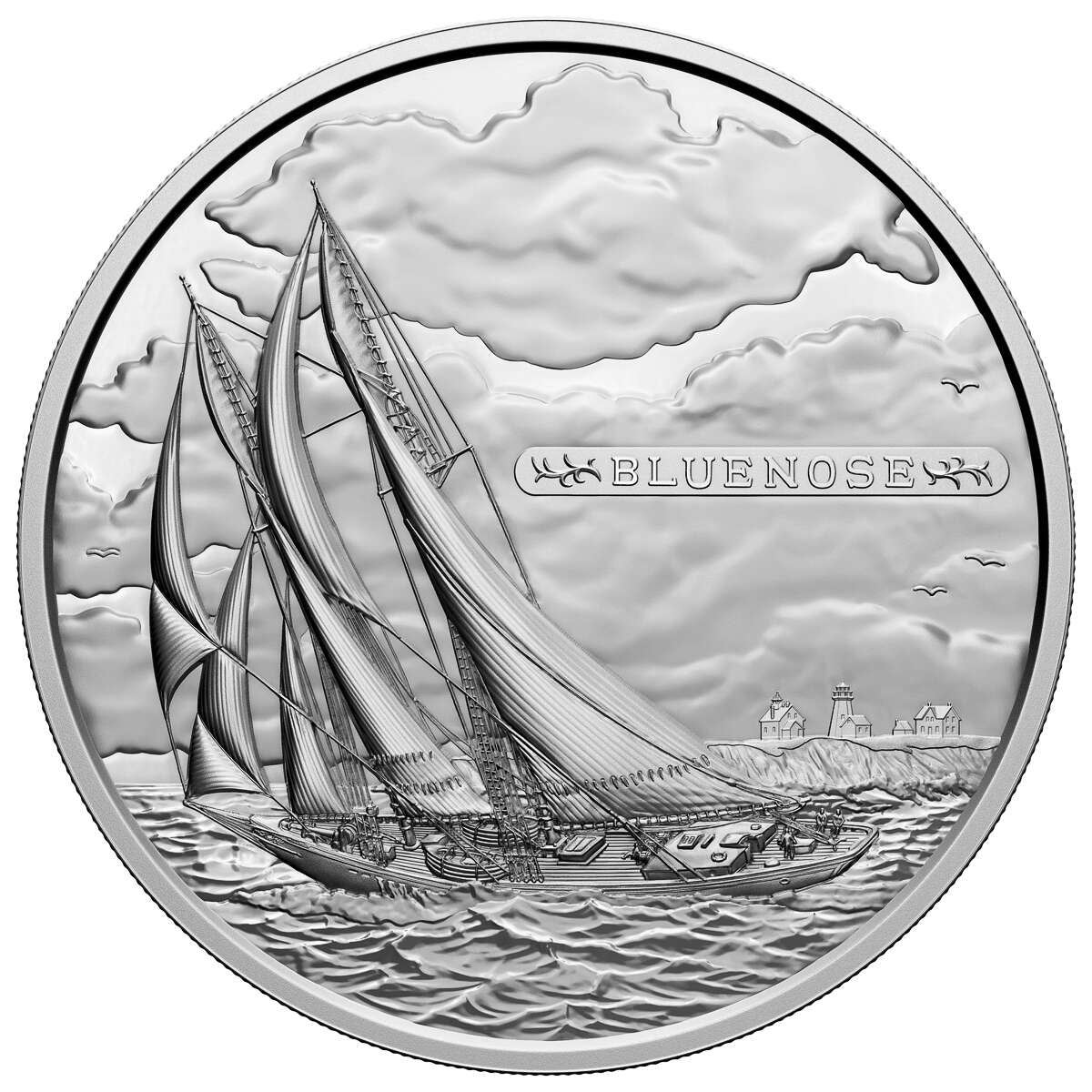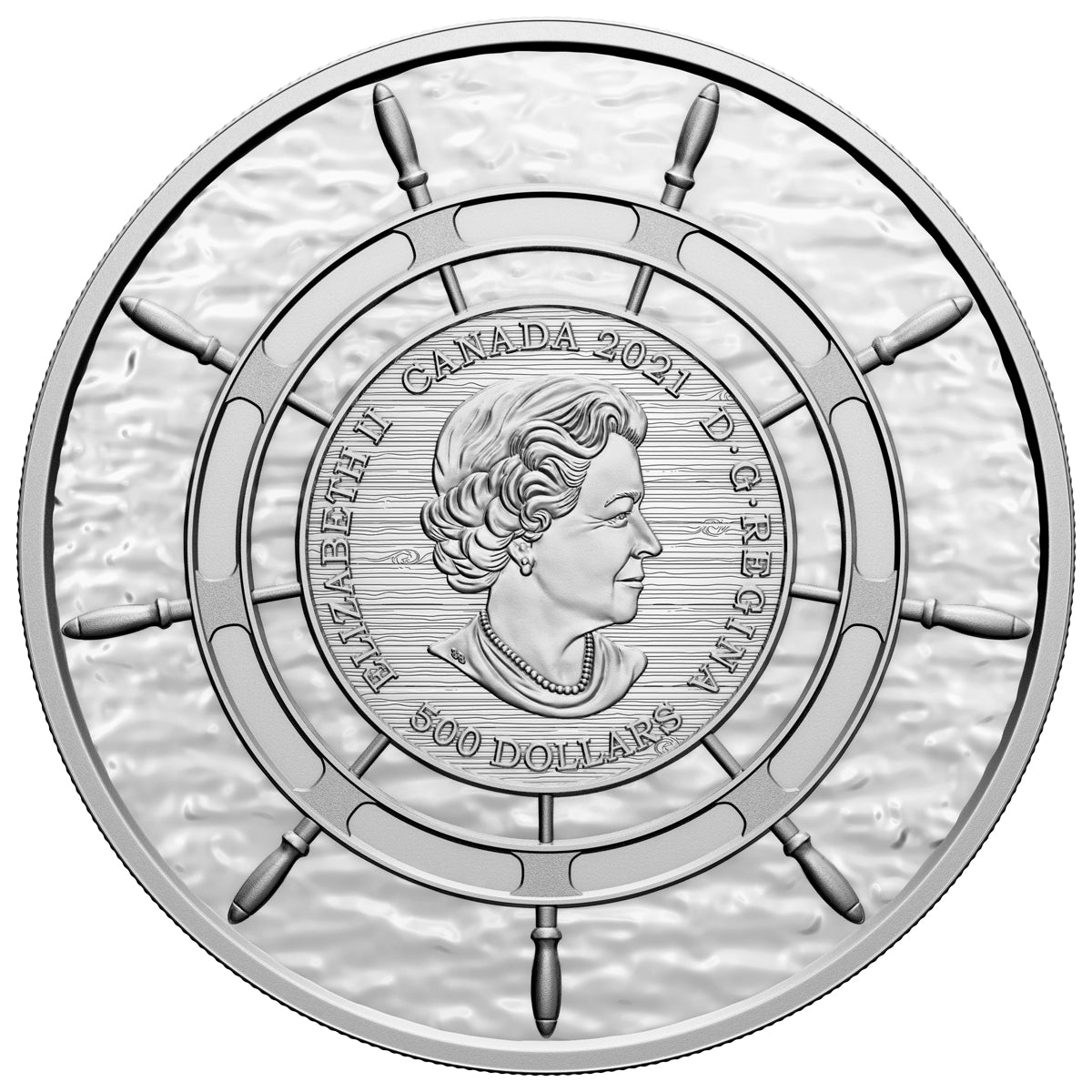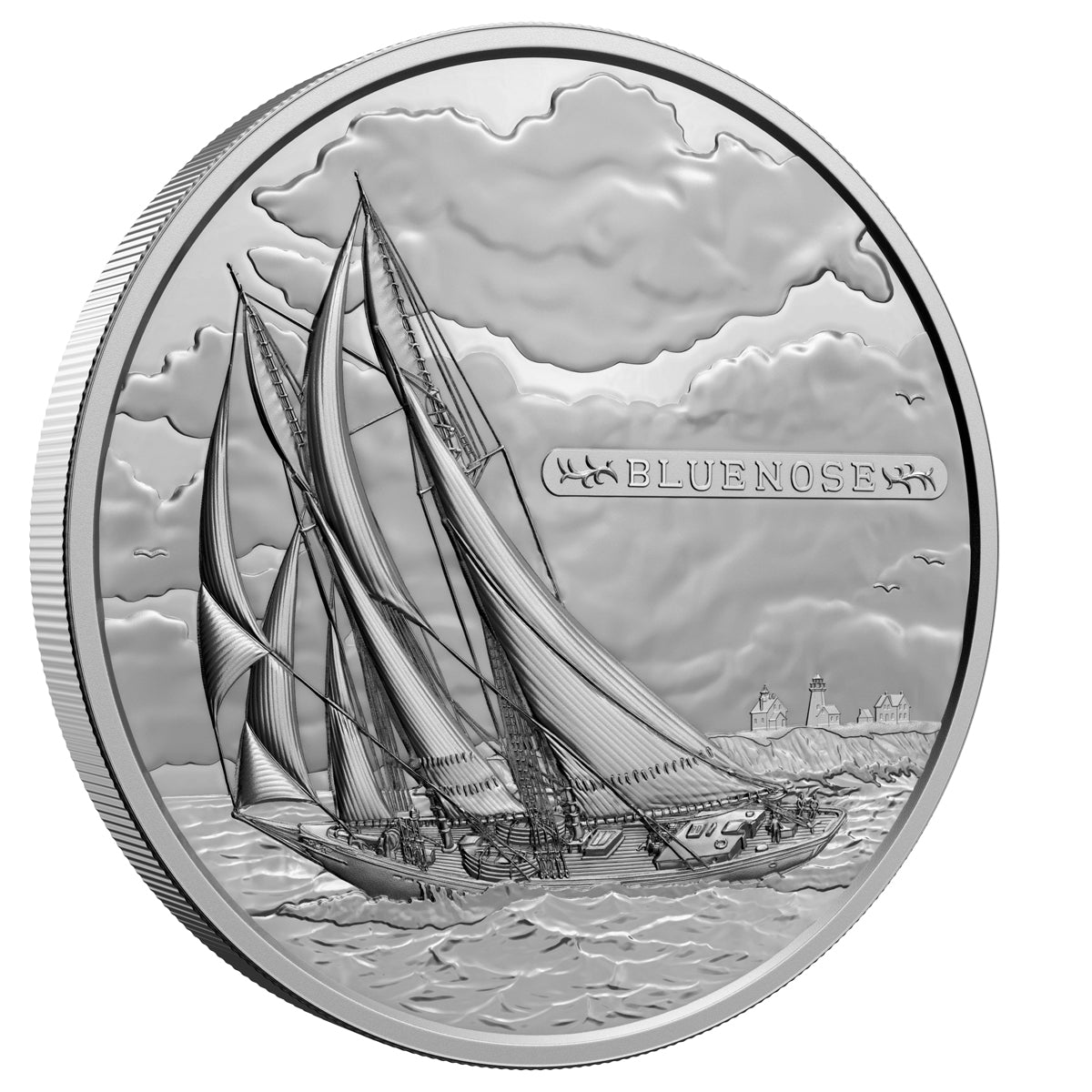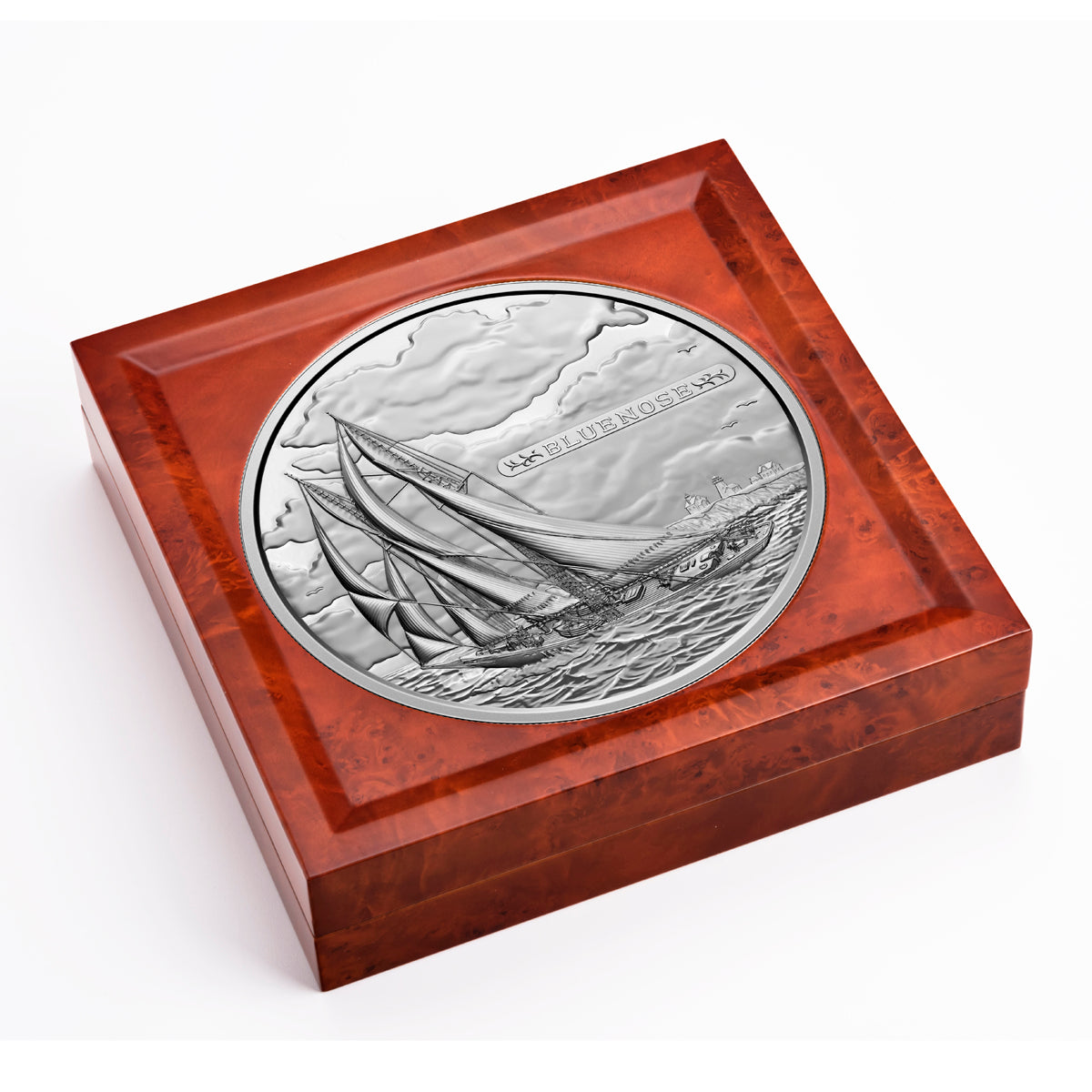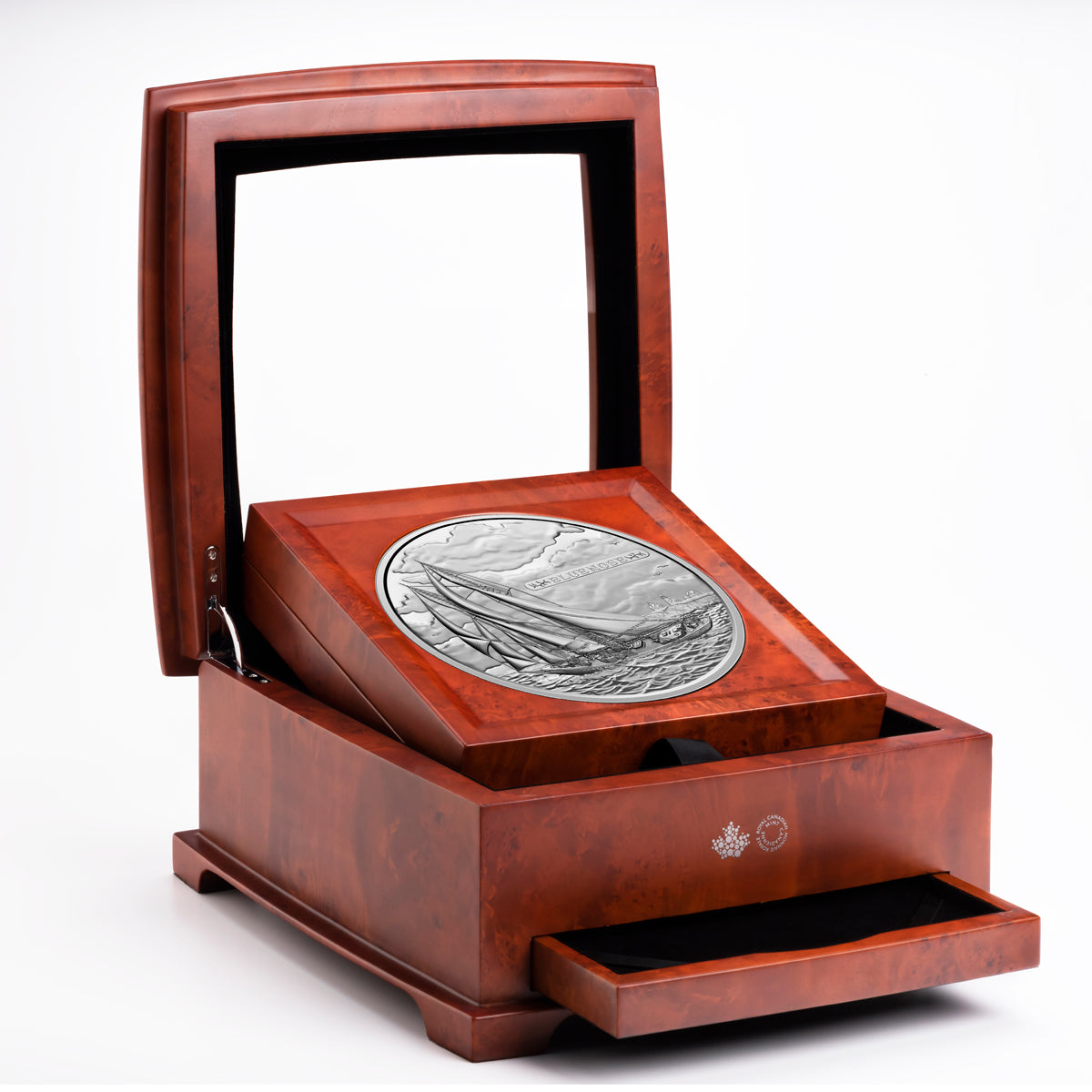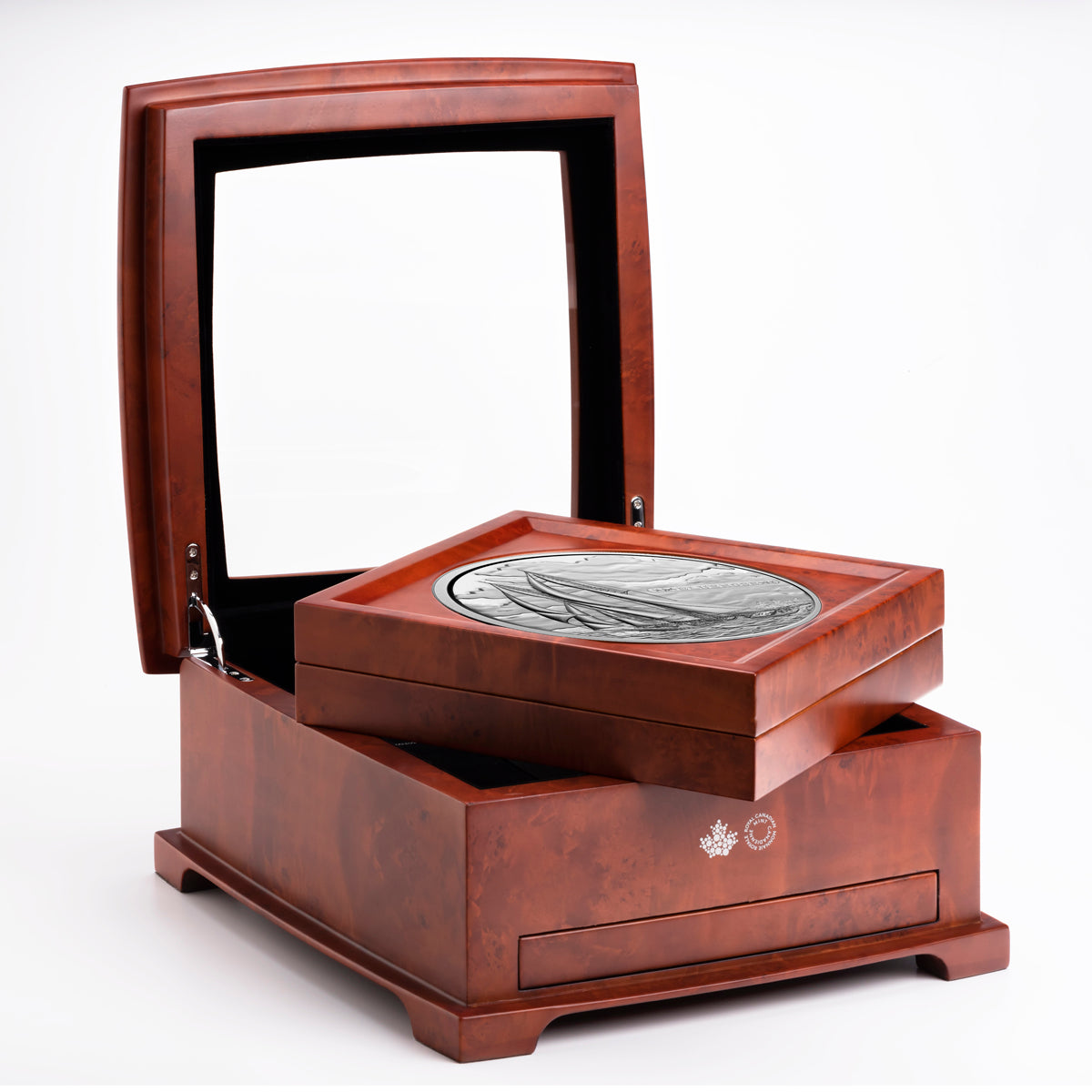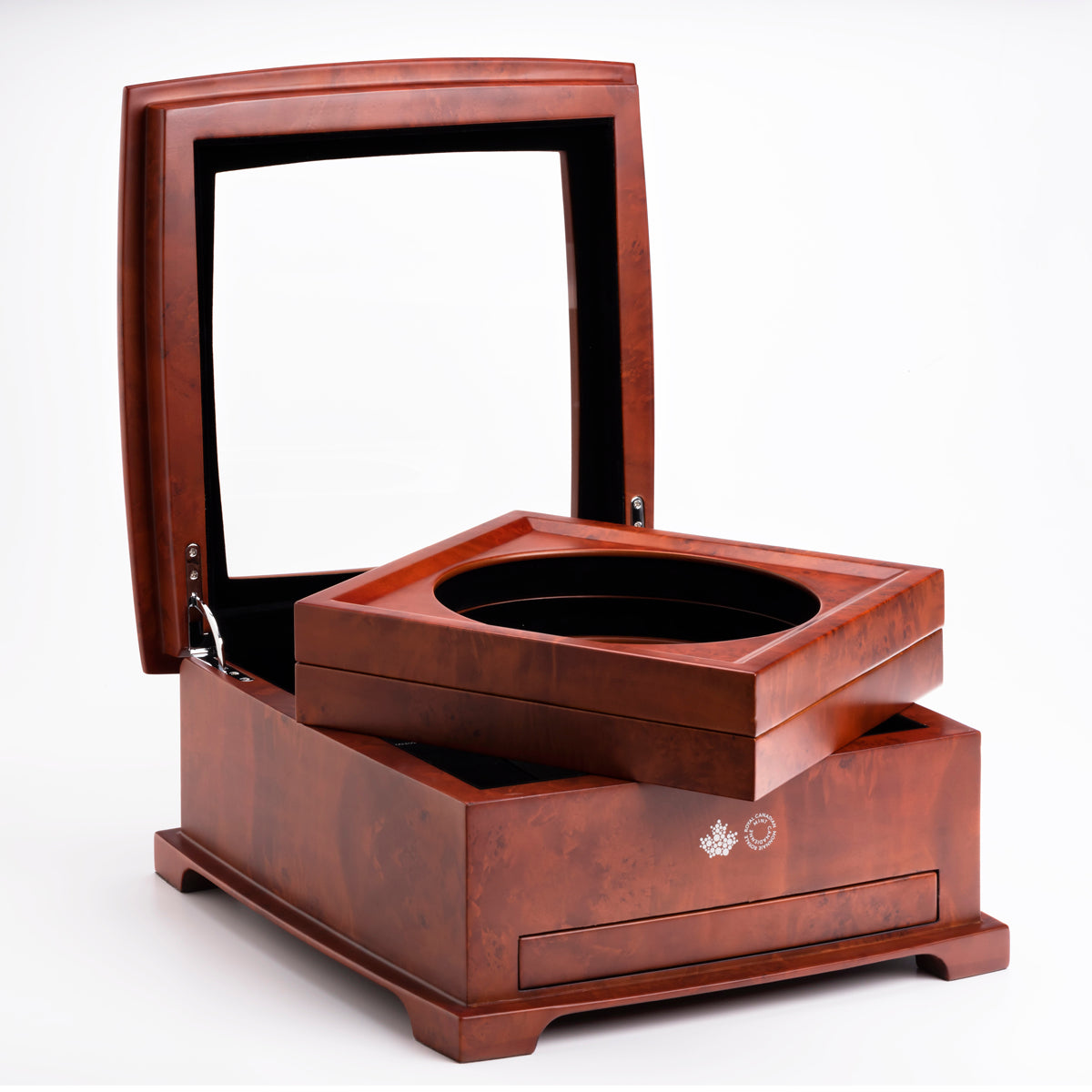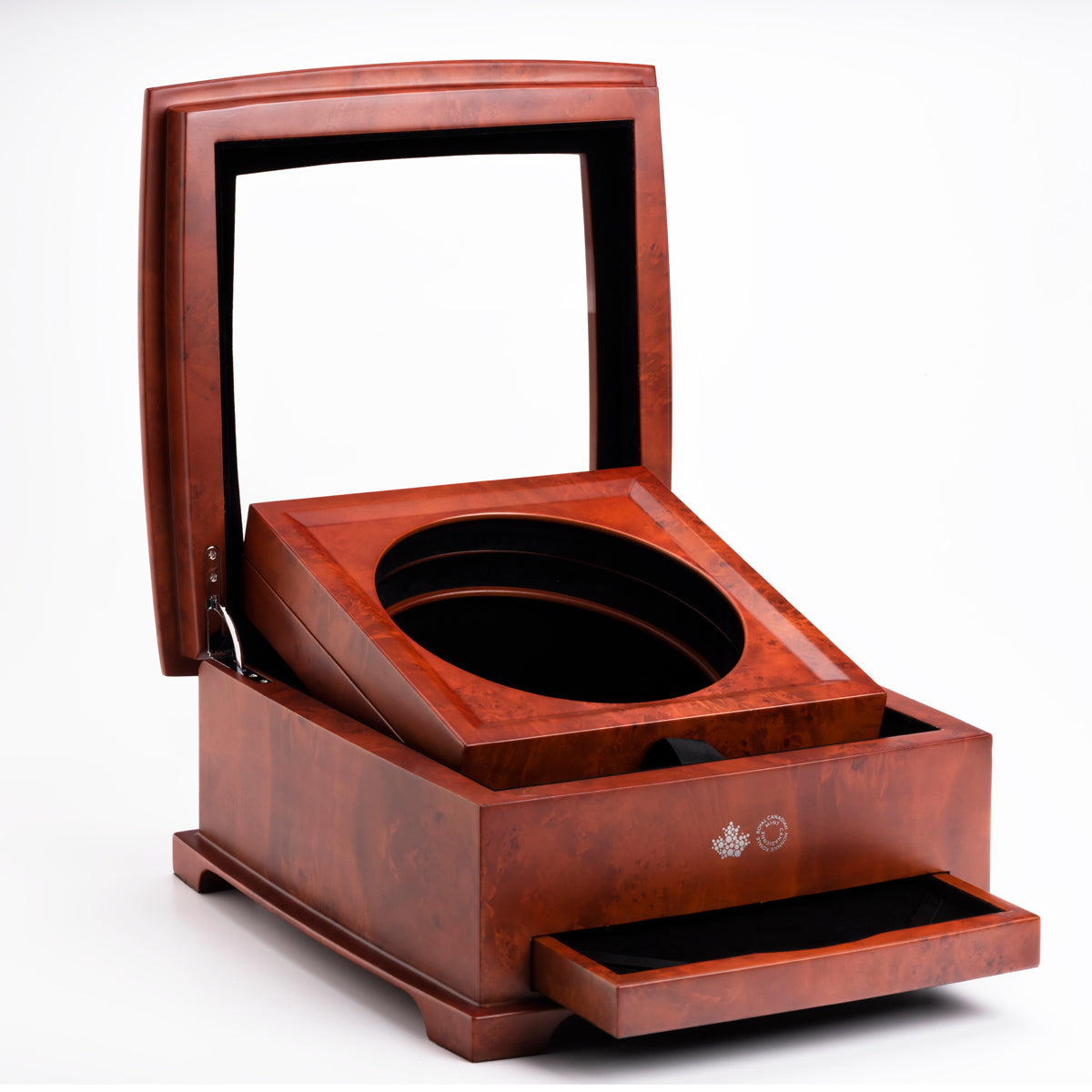Description
Capturing the full majesty of Canada’s famed racing schooner requires a large canvas, and this enormous $500 five kilogram (160+ ounce) coin is the perfect size to bring the historic Bluenose to life, showcasing the tall ship setting out beneath an evening sky and riding the waves off the coast of Cross Island, Nova Scotia. For collectors, the beauty is also matched by rarity, with only 125 coins issued for Canada and the world. HST/GST exempt.
The Design:
The main design is based on original artwork by Canadian marine artist Yves Bérubé. It presents a timeless portrait of Canada’s famous Bluenose, accompanied by ornamental scrollwork as it appeared on the iconic schooner. The obverse features a wood field pattern, a reproduction of the ship’s wheel, and the effigy of Her Majesty Queen Elizabeth II by Susanna Blunt. The coin comes displayed in a prestigious wood case with a drawer containing the certificate of authenticity and a booklet about the coin.
The Bluenose Schooner:
The story behind the Bluenose can be traced back to 1919, when the hearty fishermen of the Canadian Maritimes scoffed at the America’s Cup race being cancelled because of “strong winds”. While the America’s cup was a race of “recreational yachts”, the fishermen sought to establish their own contest. In 1920, the International Fishermen’s Trophy was established as a prize for “the fastest ship in the North Atlantic fishing fleet”, with a requirement that any ship entered had to be a true working fishing vessel.
Canada faced a great challenge with this new race, as the American fishing vessels were usually smaller and faster. In 1920, the inaugural race was won by a ship from Gloucester, Massachusetts, and the Canadians vowed to defeat their rivals the following year. It was this challenge that inspired Halifax businessmen and Captain Angus Walters to commission W.J. Roué to design a sleek new ship that could beat the New England rivals.
The new Bluenose schooner was completed in early 1921 and was designed both as a working fishing vessel and a racing craft. With Angus Walters at the helm, the Bluenose triumphed in its first race, and the ship remained undefeated through an 18 year career.
After a sensational racing career, Bluenose’s final years and foundering in 1946 marked a sad end to a glorious era. Despite the loss, the legacy of the Canadians who built and crewed this legendary vessel still lives on, forever preserved in images that inspire awe—like the one engraved on this magnificent 5 kg fine silver showpiece. The sight of Bluenose sailing once again, its majestic sails filled with wind, will whisk you back in time and fill you with the thrill of the race, the euphoria of victory, and an unmistakable sense of pride for this symbol of Canada’s maritime heritage.
The Bluenose Schooner:
The story behind the Bluenose can be traced back to 1919, when the hearty fishermen of the Canadian Maritimes scoffed at the America’s Cup race being cancelled because of “strong winds”. While the America’s cup was a race of “recreational yachts”, the fishermen sought to establish their own contest. In 1920, the International Fishermen’s Trophy was established as a prize for “the fastest ship in the North Atlantic fishing fleet”, with a requirement that any ship entered had to be a true working fishing vessel.
Canada faced a great challenge with this new race, as the American fishing vessels were usually smaller and faster. In 1920, the inaugural race was won by a ship from Gloucester, Massachusetts, and the Canadians vowed to defeat their rivals the following year. It was this challenge that inspired Halifax businessmen and Captain Angus Walters to commission W.J. Roué to design a sleek new ship that could beat the New England rivals.
The new Bluenose schooner was completed in early 1921 and was designed both as a working fishing vessel and a racing craft. With Angus Walters at the helm, the Bluenose triumphed in its first race, and the ship remained undefeated through an 18 year career.
After a sensational racing career, Bluenose’s final years and foundering in 1946 marked a sad end to a glorious era. Despite the loss, the legacy of the Canadians who built and crewed this legendary vessel still lives on, forever preserved in images that inspire awe—like the one engraved on this magnificent 5 kg fine silver showpiece. The sight of Bluenose sailing once again, its majestic sails filled with wind, will whisk you back in time and fill you with the thrill of the race, the euphoria of victory, and an unmistakable sense of pride for this symbol of Canada’s maritime heritage.

